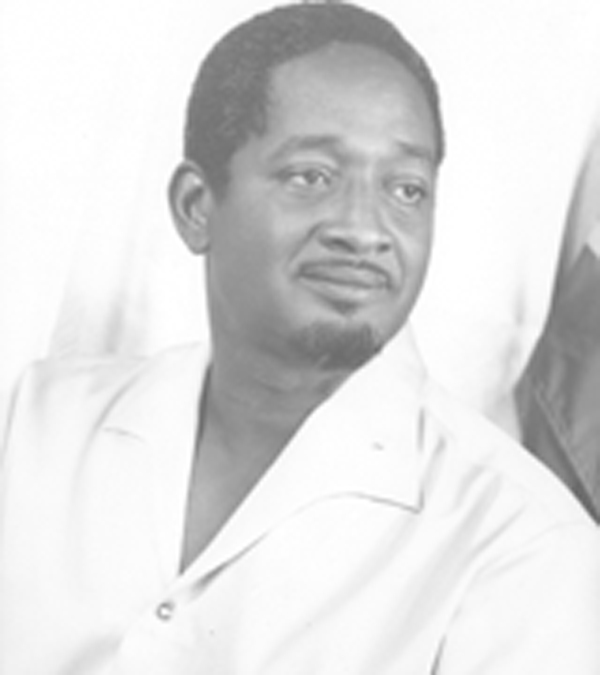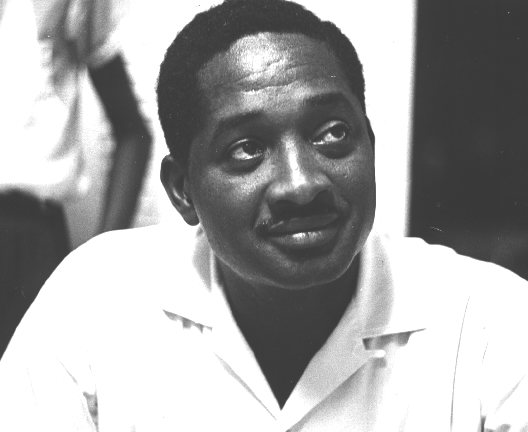<Back to Index>
- Philologist Alessandro D'Ancona, 1835
- Composer Franz Ignaz Beck, 1734
- President of Guyana Linden Forbes Sampson Burnham, 1923
PAGE SPONSOR


Linden Forbes Sampson Burnham (20 February 1923 – 6 August 1985) was the leader of Guyana from 1964 until his death, first as Premier from 1964 to 1966, then as the Prime Minister from 1966 to 1980 and finally as President from 1980 to 1985.
Burnham, an Afro - Guyanese, was born in Kitty, a suburb of Georgetown, East Demerara, Guyana, as one of three children. He attended Central High School and the country's prestigious and elite Queen's College exclusively for boys at that time. In 1942, he won the Guyana Scholarship as the country's top student. The country was, at that time a colony of Britain. Burnham went on to study law, and received a law degree from the University of London in 1948. He graduated with honors.
He
was
married to Viola Burnham, who was also involved in
politics. He had
three children, Roxane, Annabelle, and Francesca from
his first
marriage to Bernice Lataste. His second marriage to
Viola produced two
daughters, Melanie and Ulele. The Burnhams also
adopted their son
Kamana.
Burnham was one of the principal founders of the People's Progressive Party (PPP), which was launched on January 1, 1950; the Indo - Guyanese labor leader Cheddi Jagan became PPP Leader, while Burnham became its Chairman. In 1952, Burnham became the president of the party's affiliated trade union, the British Guiana Labour Union, in 1952. In 1953, the PPP won 18 of 24 seats in the first election permitted by the British colonial government. In the short lived PPP government that followed, Burnham served as Minister of Education.
In
1955, there was a split in the PPP between Burnham and
Jagan. As a result, Burnham went on to form the People's National Congress in 1958, and
this party entered its first election under that name
in 1961.
In the 1964 elections, while Jagan's PPP won the highest percentage of the vote (46% to the PNC's 41%), it did not win a majority. Burnham was able to form a coalition with the United Force (TUF) which won the remaining 12% of the votes and became premier of British Guiana on 14 December. On May 26, 1966, British Guiana became an independent country and was renamed GUYANA.
Burhnam at first, pursued moderate policies. However, one of his first acts upon independence was a sweeping "National Security Act" giving the police the power to search, seize and arrest anyone virtually at will. He won full power in 1968. In 1970, he established strong relations with Cuba, the Soviet Union and other countries who had a vision to bring their people and their countries into a new era of democracy. On February 23 of that year, he declared Guyana a "Co-Operative Republic."
He adopted a policy of the people for the country, and the country for the people (autarchy), positing a development model for the country, that was to be based primarily in the economics of Co-operative enterprises. In order to fight growing balance of payments issues, he promoted the concepts of "feed, clothe and house yourselves" to the nation.
As a result of this policy, he subsequently banned most imported foods from entering the country, including simple items like white flour, salted fish, pickled meats, preserved fruits, and most canned items. This was primarily designed to promote indigenous industries based on the production of locally grown produce (the country has lands suitable for rich agricultural production / enterprises. Burnham believed the people of the country were more than capable of producing these same foods, being a country rich in natural resources and water ways, there was no reason for Guyana as a nation to be importing such foods. One of his mottoes was "Produce locally, buy locally, and trade with countries who have our best interest at heart."
While he promoted individual or family(s) production, his plans never encouraged, or laid out plans for large scale commercial production for internal use or export, with the exception of already established and government controlled products such as rice and sugar.
Burnham remained President of Guyana until his death on August 6, 1985. His body was mummified by the Laboratory of the Lenin Mausoleum in Moscow.